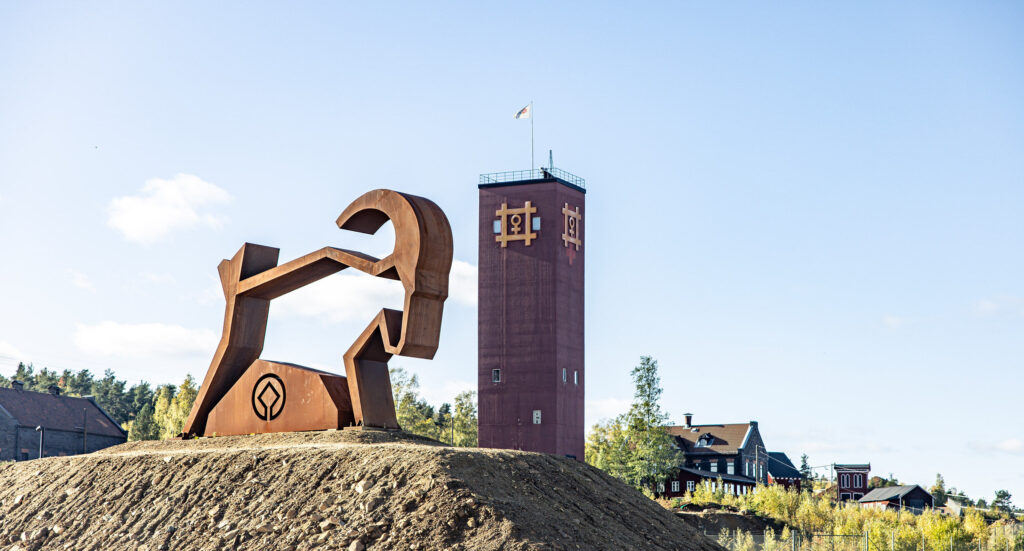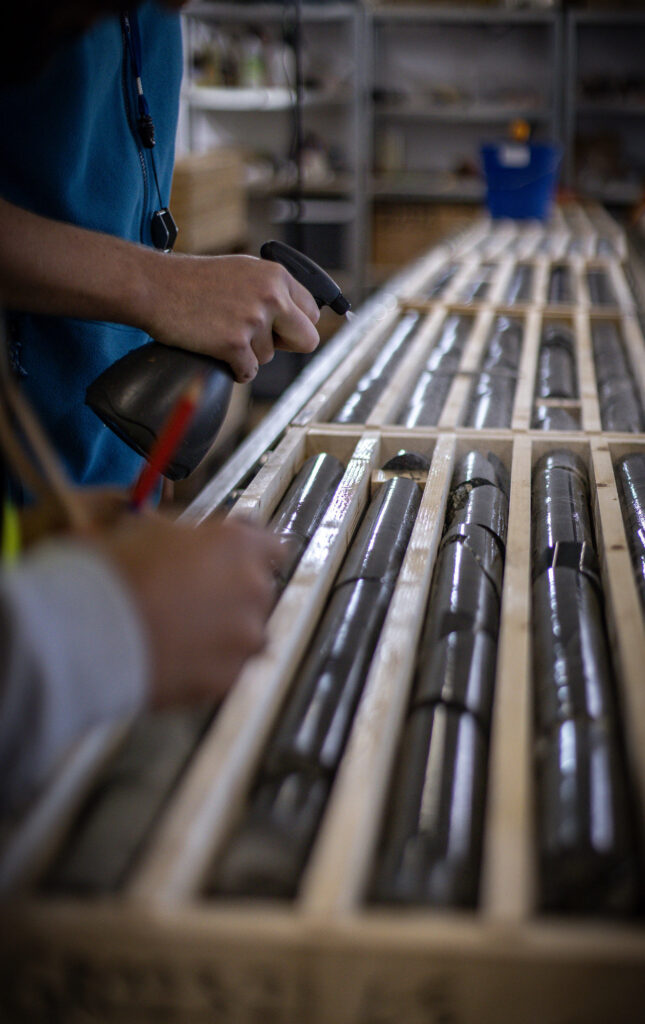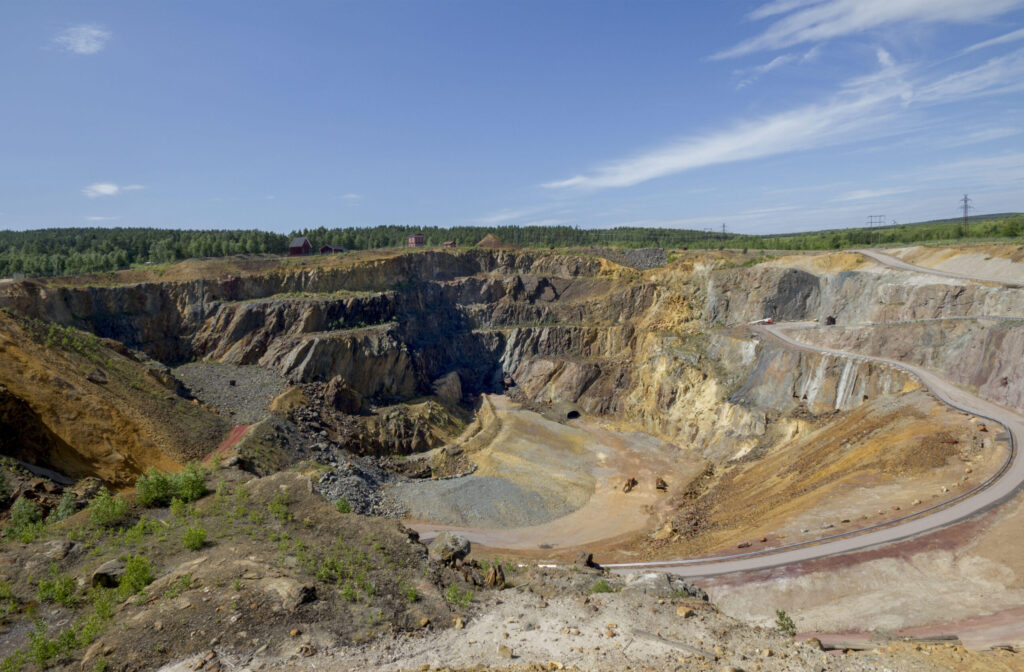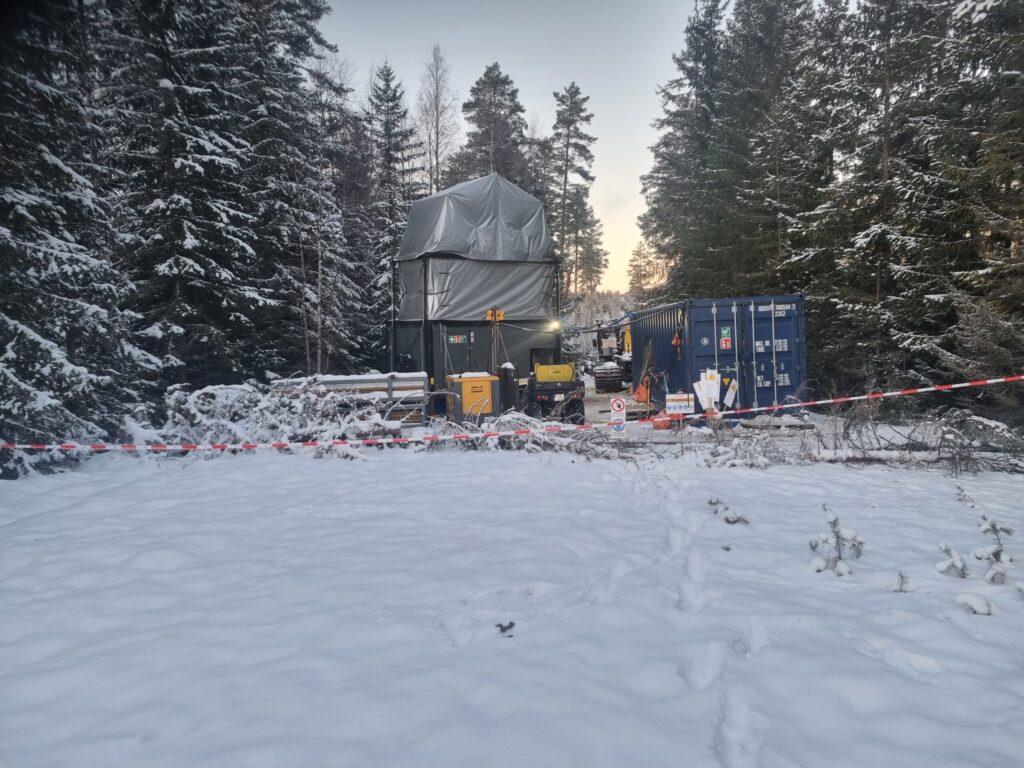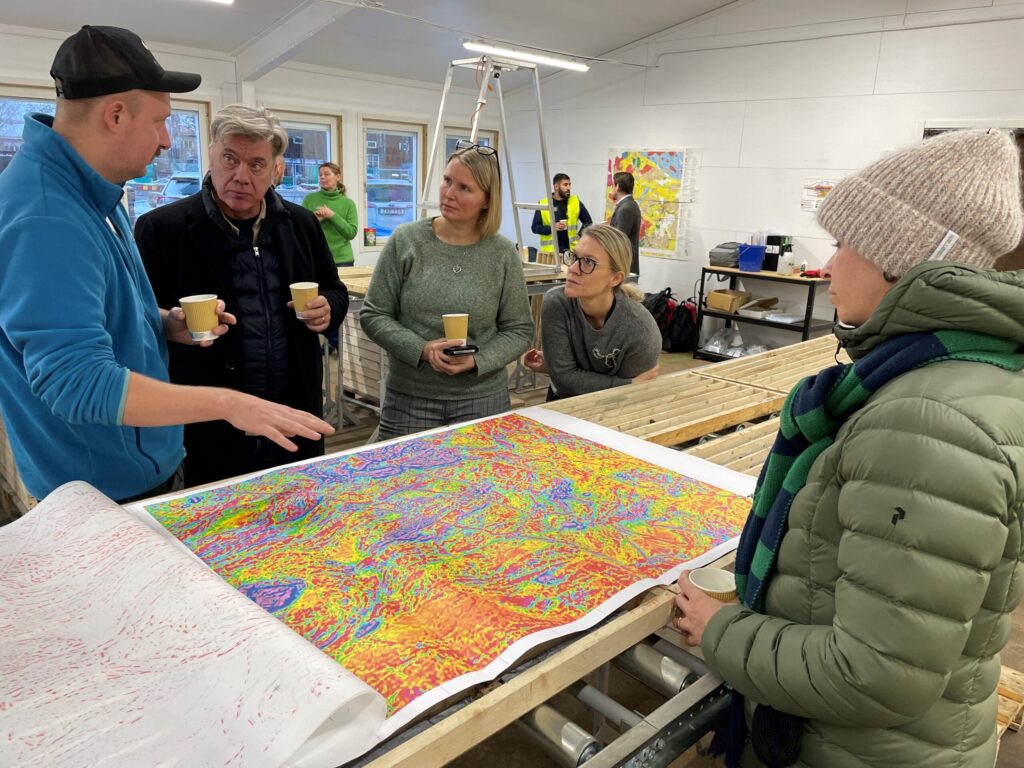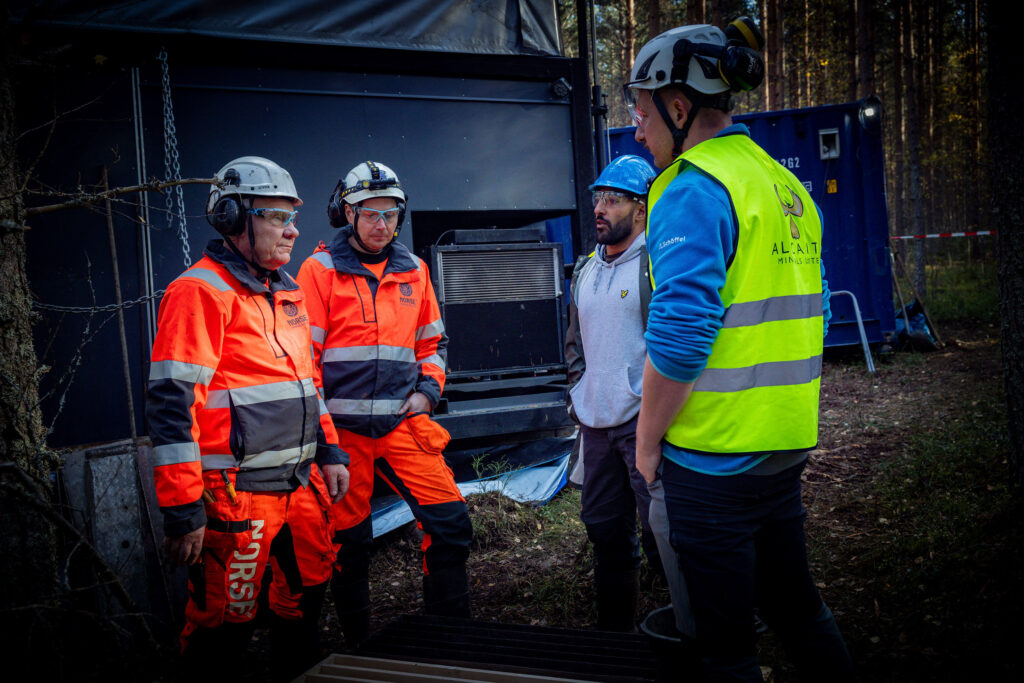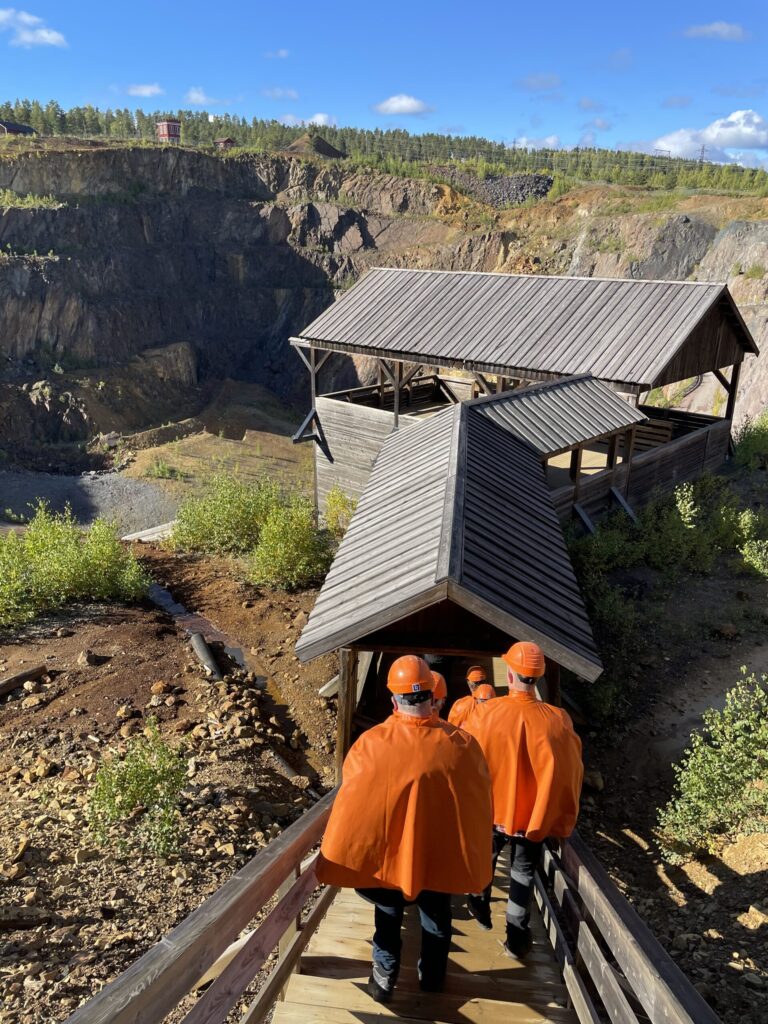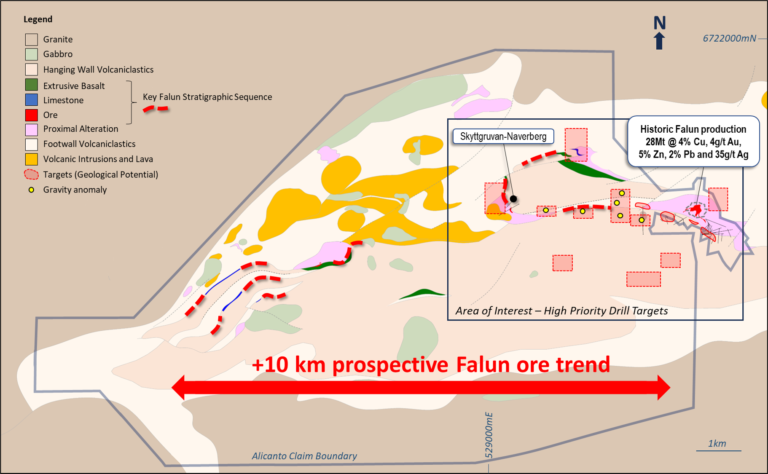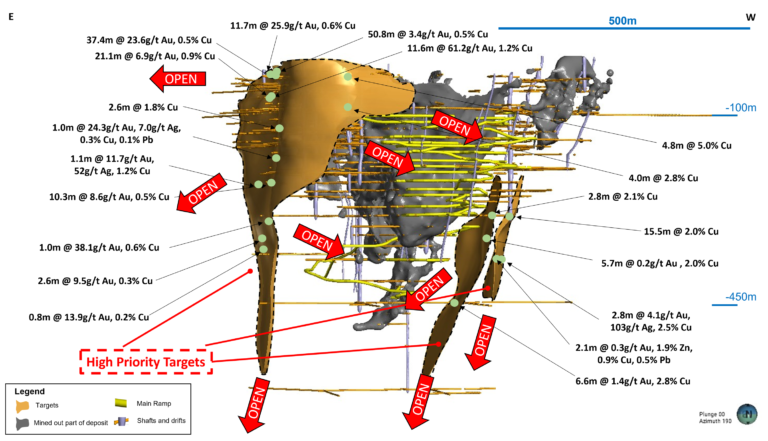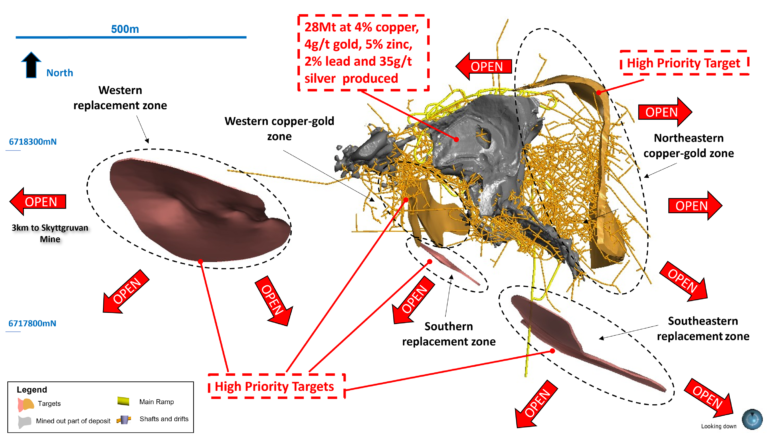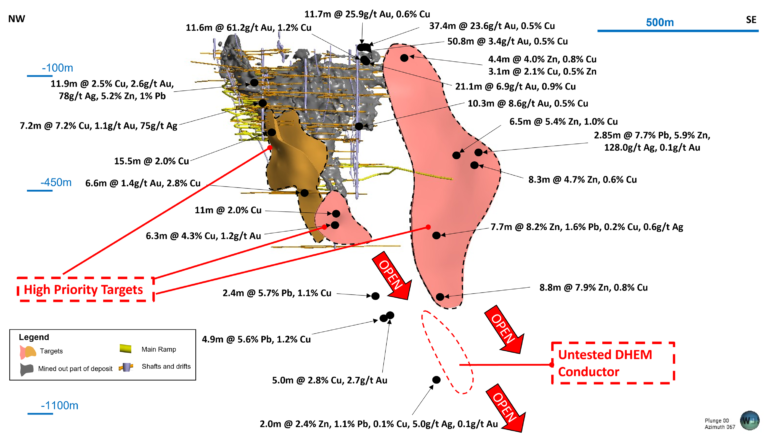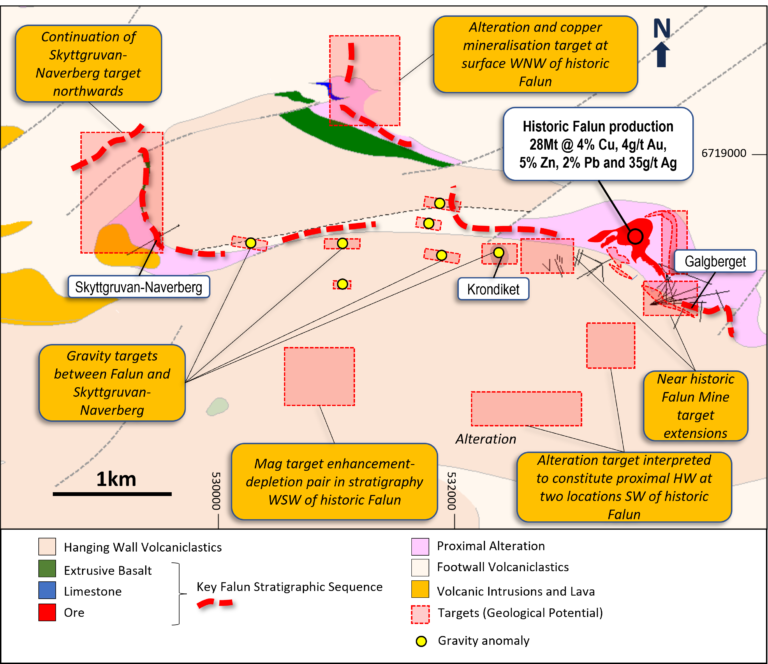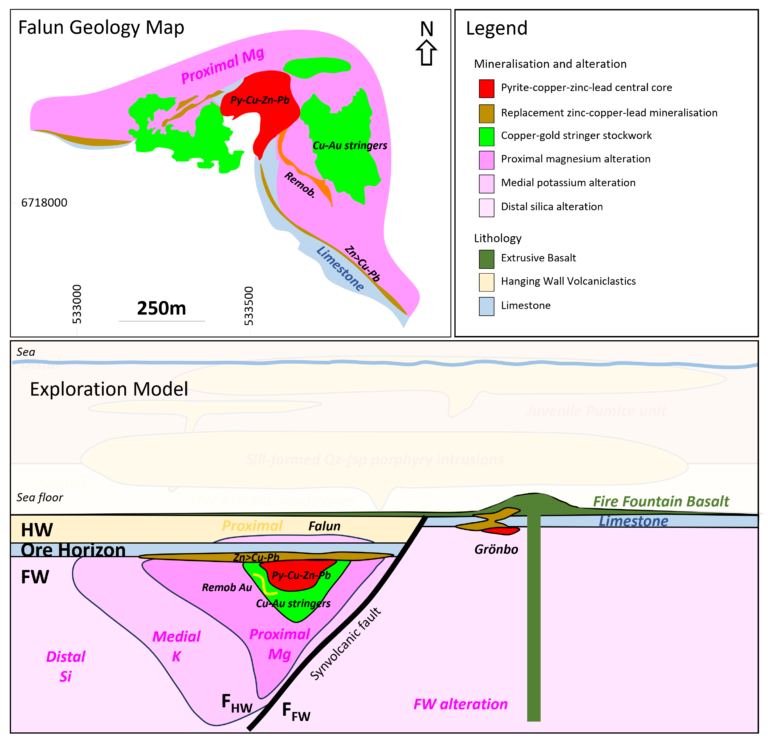Falun Copper-Gold Project
The historical Falun mine was one of the major base and precious metal sulphide deposits in Sweden. During its operating life, Falun produced approximately 28Mt @ 4% copper, 4g/t gold, 5% zinc, 2% lead and 35g/t silver.
The mining operation dates back over 1,000 years to the Viking age and continued up to 1992 when the mine closed. At its peak, the Falun mine accounted for 70% of the western world’s production of copper. Many of Europe’s greatest buildings, including the Palace of Versailles, sourced the copper for their roofing from the Falun mine.
Alicanto holds permits covering an area of 312km2 which include the historic Falun mine and surrounds. Within these permits, Alicanto controls over 60km of the target limestone horizon. Alicanto has long held the view that the historical Falun mine is only a small part of a major mineralised belt stretching over 10km within its Falun permits. Very little exploration has been undertaken in the Falun area since the closure of the mine in 1992.
Figure 1. Map of Falun regional geology highlighting the key area of interest and current high priority targets for follow up drilling
Alicanto commenced exploration of its Falun permits in September 2020. A successful drill program which intersected disseminated through to semi massive sulphides, containing visual chalcopyrite in all targets drilled, confirmed that the stratigraphic sequence at Falun could be tracked for over ten kilometres to the Green Mile target to the west of the historic Falun mine. In addition, Alicanto geologists have now mapped more than 2,400 outcrops and historical surface workings at Falun, which has lead to the discovery of numerous potential copper-gold hosting structures.
The mapping information, combined with a large volume of historical geophysical survey data sourced by Alicanto geologists, has enabled Alicanto to build a picture of the potential which still exists at Falun.
In late 2022, a drill program was conducted at Falun which focused on the Skyttgruvan-Naverberg target. The target was selected given the region’s historic exploitation of zinc and copper mineralisation as well as the target’s close proximity to (3.5km away), and along the host horizon from, the historic Falun mine. The drilling intersected multiple zones of significant mineralisation, with individual assays of up to 744g/t silver, up to 1.9% copper, and anomalous gold values (up to 0.65g/t) within broader zones of zinc (up to 32.4%).
Current modelling for both Falun and the target at Skyttgruvan-Naverberg, suggests that they each constitute a tight intrusion related skarn system with a pyrite rich core containing copper-gold-zinc-silver-lead mineralisation.
In 2023, Alicanto finalised the acquisition of the permit containing the historic Falun mine. While conducting its due diligence associated with this acquisition, Alicanto reviewed the results of approximately 1,400 drill holes from a number of limited exploration programs conducted on the permit. These results were compiled into a 3D data set which have assisted in identifying several key zones of mineralisation and follow up drill targets for the Alicanto team.
Figure 2. Significant New Mineralised Structures Identified Adjacent To Historic Falun Mine
Figure 3. High Priority Copper-Gold Targets At Falun
Figure 4. Falun Deposit Remains Open At Depth
After this limited drill program at Skyttgruvan-Naverberg and evaluation of historical drill data from the Falun mine, the Company has focused its exploration efforts around the Falun mine and along the 3.5km mineralised trend between Skyttgruvan-Naverberg and the Falun mine (refer to the ‘Area of Interest’ in Figure 1).
Fieldwork, including ground fixed loop electromagnetic and ground gravity surveying, has resulted in a series of highly prospective stratigraphy and geophysical targets being identified within this area of focus.
While there are numerous targets within Alicanto’s Falun permits, Figure 5 details the higher priority drill targets in the area of interest. These include:
- Historic Falun Mine near extensions and at depth
- Continuation of Skyttgruvan-Naverberg trend northwards
- Gravity anomalies in between Falun and Skyttgruvan-Naverberg
- Alteration and copper mineralisation at surface WNW of historic Falun
- Alteration interpreted to constitute proximal HW at two locations SW of historic Falun
- Mag enhancement-depletion pair in stratigraphy WSW of historic Falun
Figure 5. High priority drill targets in the prospective host horizon of the historic Falun mine
This fieldwork continues with expectations that additional targets will continue to be identified. Mineralisation at the Falun mine consists of a significant massive pyrite and chalcopyrite core to the mineralised zone which should be reflected as a conductive and higher density target in geophysical surveys.
In addition, the in-country team has continued to review and compile further historic data and has relogged drill core available from the Swedish Geological Survey. This has allowed the further refinement and understanding of the historic Falun deposit and the brownfields prospectivity around the old mine.
The drilling program which commenced in September 2023 has delivered immediate success:
- Drilling at Skyttgruvan-Naverberg intersected visual mineralisation with initial interpretations indicating a significantly larger system than previously indicated
- Drilling at the Krondiket target intercepted the targeted limestone ore horizon with proximal green diopside and garnetite and strong footwall magnesium alteration which could indicate the presence of a new upflow system rather than a continuation of the known Falun deposit
- Drilling at the Galgberget target target was designed to test the southern extension of the Falun deposit. Drilling intercepted strong footwall alteration and identified a second off-hole electromagnetic conductor in the area at around the 500 metre level which has the potential to represent an extension of the known ore deposit
The most recent drilling at Skyttgruvan-Naverberg was collared in proximal strongly magnesium altered rocks with semi-massive sulphide zones of zinc and lead (sphalerite-galena-pyrrhotite-pyrite). This is interpreted as an intersection of replacement style sphalerite dominated mineralisation and the proximal alteration zone consistent with Alicanto’s Falun Exploration model indicating drilling is close to potential copper-gold mineralisation in the central part of the system.
Figure 6. Generalised geology of the Falun Deposit and resulting Exploration Model
